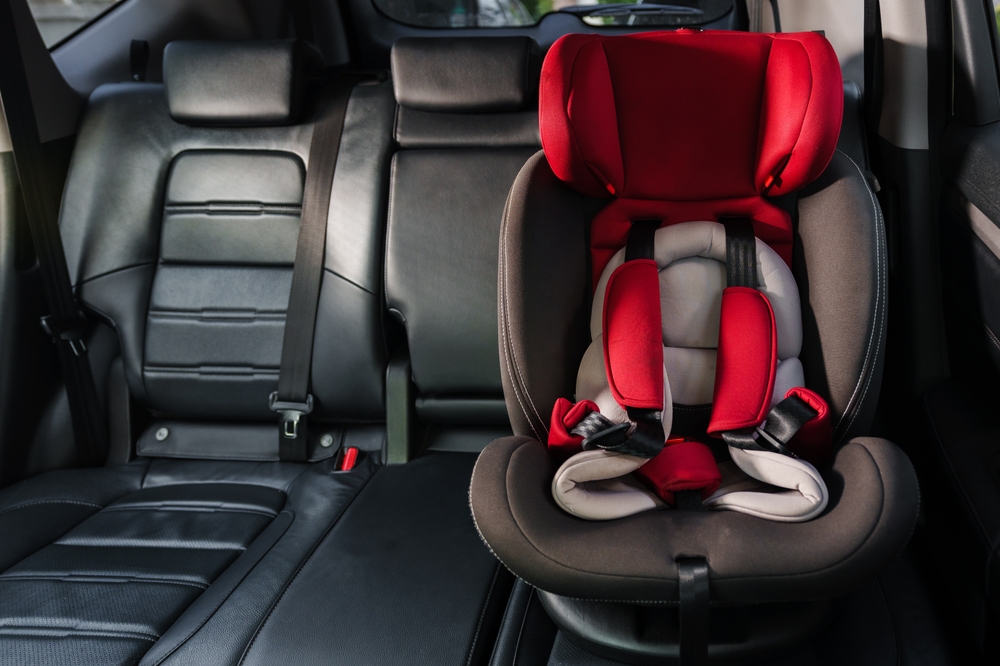
Car seats and child restraints play a critical role in protecting children in a crash. When they fail, victims must show that the seat or restraint was defective. Under New Jersey product liability law, manufacturers, distributors, and retailers can be held responsible when defective child safety products cause injuries. Proving a defect, however, requires careful investigation and strong evidence.
Why Car Seat Defects Are So Serious
Children are among the most vulnerable passengers in any vehicle. Car seats are supposed to reduce the risk of serious injury or death in a crash. When a restraint fails, it often leads to:
- Head or brain injuries
- Spinal cord damage
- Broken bones
- Internal injuries
- Fatalities in severe cases
Because parents rely on car seats to keep their children safe, courts and juries often take these cases very seriously.
Similar Post: Injuries Caused by Defective Products: Your Rights in New Jersey
Types of Car Seat Defects
To prove a case, it’s important to identify the type of defect involved. Car seat and child restraint defects generally fall into three categories:
1. Design Defects
A flaw in the way the car seat was designed makes it inherently unsafe, even if manufactured correctly. For example, a latch system that doesn’t lock securely.
2. Manufacturing Defects
The design is safe, but mistakes during production make certain seats defective. Examples include cracked plastic shells or faulty straps.
3. Failure to Warn / Inadequate Instructions
Even if the product itself is safe, failing to provide clear installation instructions or warnings about risks can create liability.
Gathering Evidence to Prove a Car Seat Defect
Proving a car seat or child restraint was defective requires showing that the defect directly caused the injury. Attorneys often use multiple forms of evidence, including:
- The product itself: Preserving the car seat in its post-accident condition is critical.
- Accident reports: Police reports and crash reconstructions show how the accident happened.
- Medical records: These link the child’s injuries to the failure of the restraint.
- Expert testimony: Engineers and safety specialists can explain how the defect caused or worsened the injury.
- Recall history: If the car seat model has been recalled, this can strengthen the case.
- Photos and videos: Images of the accident scene and the car seat’s condition provide visual proof.
Common Signs of a Defective Car Seat
Parents should be alert to warning signs that may indicate a defect, such as:
- Straps that loosen on their own
- Buckles that fail to latch or unlatch
- Plastic cracking or breaking under stress
- Car seat movement even after proper installation
- Injuries inconsistent with the severity of the crash
If any of these occur, it may suggest a defect rather than user error.
Overcoming the “User Error” Defense
Manufacturers often argue that injuries occurred because the car seat was installed or used incorrectly. While misuse is common, it is not always the cause of failure. To overcome this defense, attorneys may:
- Show that instructions were unclear or misleading
- Demonstrate that other parents experienced similar failures
- Use expert testimony to prove the defect would cause failure even with proper installation
By shifting the focus back to the product itself, plaintiffs can establish liability.
Similar Post: The Emotional Impact of Personal Injury: Seeking Compensation for Pain and Suffering
The Role of Recalls in Car Seat Defect Cases
The National Highway Traffic Safety Administration (NHTSA) regularly issues recalls for defective car seats. If a car seat was recalled before the accident, and the manufacturer failed to notify consumers properly, this can serve as strong evidence of liability.
Even if the recall occurred after the accident, it may still support the claim by showing that the defect was widespread.
Who Can Be Held Responsible?
In defective car seat cases, multiple parties may share liability, including:
- Manufacturers who designed or produced the seat
- Distributors and retailers who sold the defective product
- Testing companies that certified the seat as safe without adequate review
This broad approach ensures that all responsible parties are held accountable.
Damages Available in Defective Car Seat Cases
When a defective car seat or child restraint causes injury, families may be able to pursue compensation for both financial losses and emotional harm. Recoverable damages can include:
- Medical expenses and rehabilitation costs for emergency care, hospital stays, surgeries, and ongoing therapy.
- Long-term care needs if the injury results in permanent disability or requires future medical support.
- Pain and suffering to account for the physical pain of the child and the emotional toll on the family.
- Lost income if parents must take time away from work to care for their child.
- Wrongful death damages in the tragic event that a defective product leads to the loss of a child.
- Punitive damages in cases where the manufacturer acted with reckless disregard for safety, serving as a way to punish wrongdoing and deter future negligence.
By pursuing these damages, families can secure the resources needed to cover medical bills, provide ongoing support, and hold negligent companies accountable.
Statute of Limitations For Product Liability Cases in New Jersey
In New Jersey, product liability claims must generally be filed within two years of the date of injury. However, when the injured party is a child, different rules may extend the timeline. Because deadlines are strict, consulting an attorney quickly is critical.
Why Hiring an Experienced Personal Injury Lawyer is Critical
Product liability cases involving car seats are complex. Manufacturers have teams of lawyers and experts ready to defend their products. Families need an experienced attorney to:
- Preserve and analyze the defective product
- Retain experts in engineering and child safety
- Navigate federal safety regulations and recalls
- Build a compelling case for maximum compensation
Without strong legal representation, parents may struggle to prove the defect and recover the compensation their child deserves.
Was Your Child Injured by a Defective Car Seat? Call Blume Forte Attorneys at Law Today
If your child was injured because of a defective car seat or child restraint, you may have a right to pursue justice. At Blume Forte Attorneys at Law, we have decades of experience handling complex product liability cases across New Jersey.
We know how to investigate product failures, expose manufacturing flaws, and hold companies accountable when their negligence harms children. With offices in Chatham, Jersey City, North Bergen, and Sea Girt, our attorneys are ready to fight for your family.
Call us today at 973-845-4421 or fill out our online contact form for a free consultation. Let Blume Forte Attorneys at Law protect your rights and help you recover the compensation your child deserves.
Disclaimer: This blog is intended for informational purposes only and does not establish an attorney-client relationship. It should not be considered as legal advice. For personalized legal assistance, please consult our team directly.

